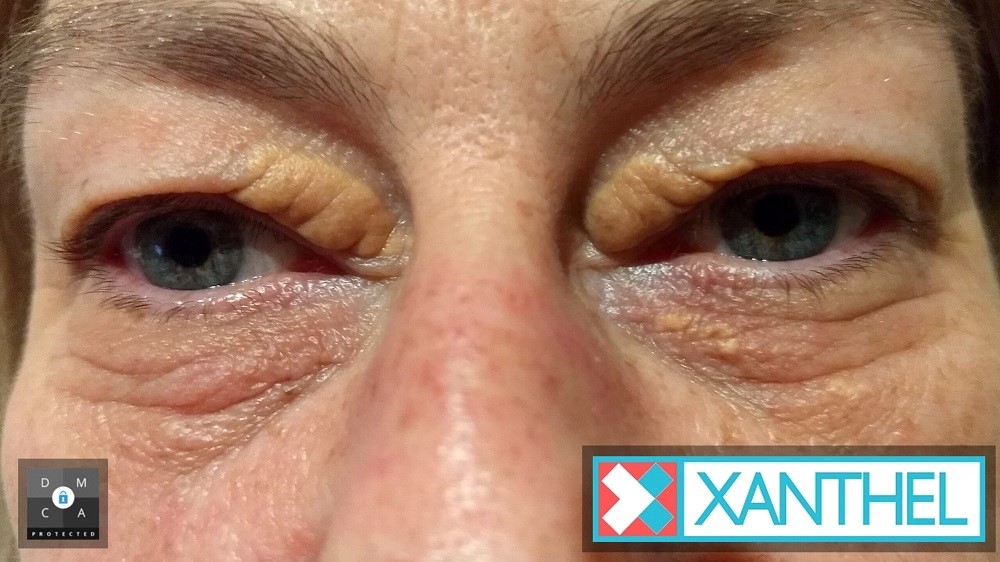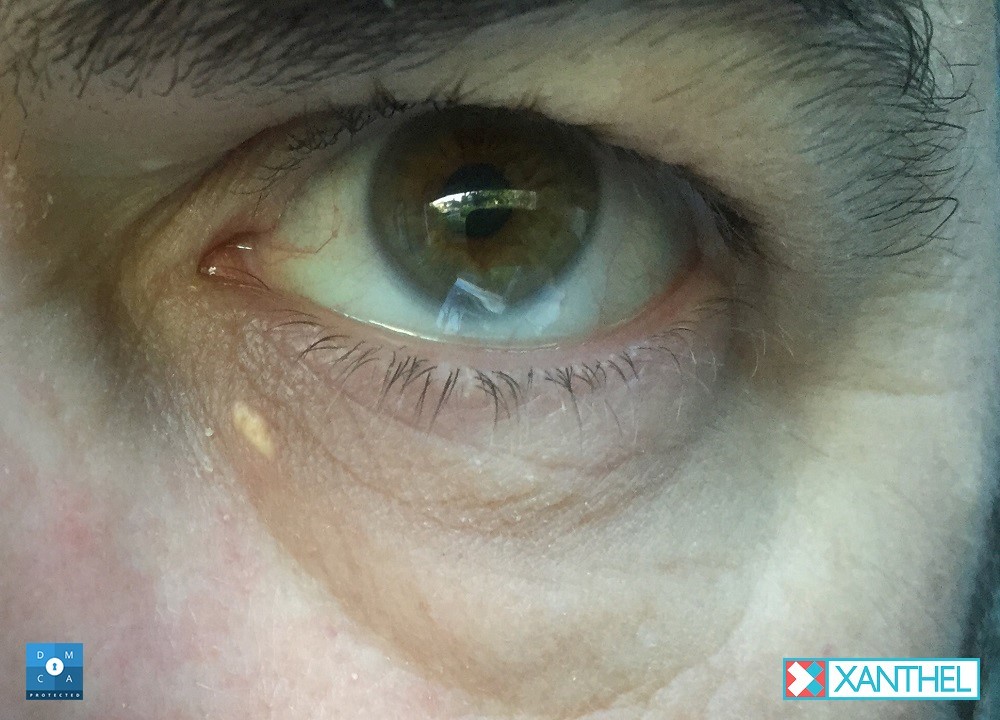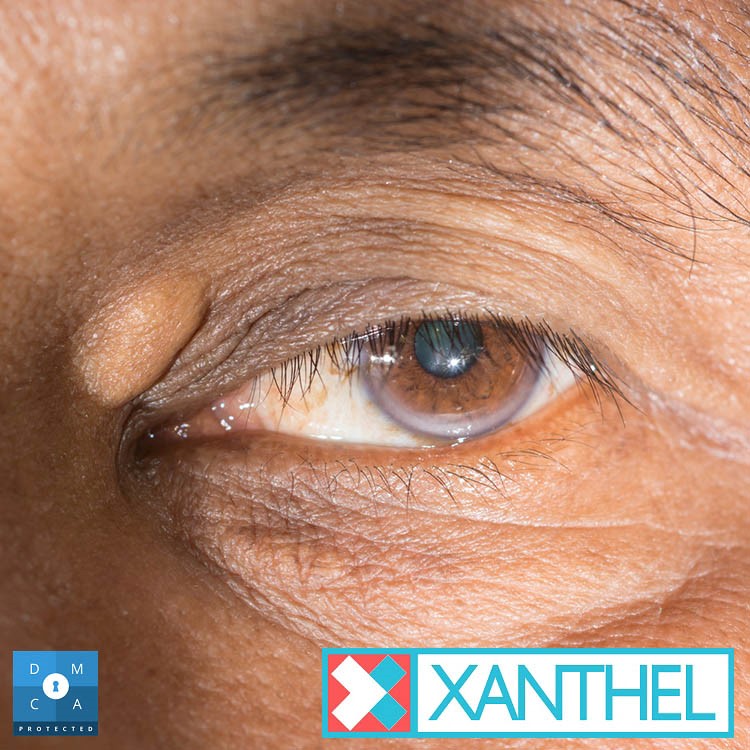Xanthomas Around the Eyes – A Closer Look at Xanthelasma
Xanthomas Around the Eyes – A Closer Look at Xanthelasma
It is a specific kind of modern-day anxiety. You notice a soft, yellowish discoloration on the skin around your eye and turn to a search engine for answers. You type in a phrase like “yellow spot near eye” or “fat deposit on eyelid,” and the word that comes back is “xanthoma.” But the images and descriptions show bumps on elbows, knees, and hands, which looks nothing like the flat patch on your delicate eyelid skin.
This is where the confusion begins, a frustrating cycle of searching and questioning. Are you looking at the right condition? Did you misunderstand something? This disconnect between the general term “xanthoma” and the specific manifestation you see on your face can be deeply unsettling. It is time to bring this picture into sharp focus, to separate the broad medical category from your precise, personal experience. Understanding this distinction is the essential first step toward clarity, confidence, and a plan of action.

The General Term vs. The Specific Location
The simplest way to end the confusion is to think of these terms like a family tree. “Xanthoma” is the surname of a large, extended family. A xanthoma, by definition, is a deposit of fatty substances, mostly cholesterol, that has accumulated under the skin, creating a visible lesion. The name comes from the Greek “xanthos,” for “yellow,” which is their characteristic color. Members of this family can show up in many places on the body.
“Xanthelasma” is the name of one specific, and by far the most common, member of that family. A xanthelasma is simply a xanthoma that appears exclusively on or around the eyelids. Its full clinical name, xanthelasma palpebrarum, confirms this, as “palpebrarum” is Latin for “of the eyelids.”
So, the rule is simple and absolute: all xanthelasmas are a type of xanthoma, but not all xanthomas are xanthelasmas. It is the same as saying all collies are dogs, but not all dogs are collies. The location is everything. If you have these yellowish, fatty plaques, and they are on your eyelids, the correct and specific name for your condition is xanthelasma. The other members of the xanthoma family have different names and locations, such as tuberous xanthomas on the elbows or tendinous xanthomas on the Achilles tendon.

A Critical Clarification: On the Eyelid, Not In the Eye
Let us address a common and very important point of fear and confusion right away. When people talk about xanthomas “in the eyes,” they are almost always referring to xanthelasmas, which are on the skin of the eyelids. This is a crucial distinction. Xanthelasma is a dermatological condition, meaning it affects the skin. It is not an ophthalmological condition affecting the eye itself.
These plaques form in the dermal layers of the eyelid skin. They do not grow inside your eyeball, on the cornea, or anywhere that would interfere with your vision. They are entirely external. While their appearance can be a source of significant cosmetic concern, they pose no direct physical danger to the function of your eyes. Understanding this can alleviate a tremendous amount of anxiety.

The Story Behind the Plaques: Why Do They Appear Around the Eyes?
The appearance of xanthelasmas tells a story about how your body is handling fats. This story typically has one of two plots.
For about half of the people who develop them, xanthelasmas are a direct, external signal of an internal issue called dyslipidemia. This is a medical term for having abnormal levels of lipids, such as high LDL (“bad”) cholesterol or high triglycerides, in the blood. When there is an excess of these fats circulating, the body begins to deposit them in various tissues. The eyelids, with their extremely thin skin and a very rich network of tiny blood vessels, are a prime location for these deposits to settle and become visible. This is why the appearance of xanthelasmas should always prompt a visit to your doctor for a simple blood test to check your cholesterol.
The other half of cases, however, occur in people with completely normal cholesterol and lipid levels. For these individuals, the problem is not a systemic one. The issue is purely local to the skin of the eyelids. It is believed that these people have a localized vulnerability, perhaps a genetic trait or the result of past minor inflammation, that makes their skin cells in that specific area more “receptive” or “sticky” for lipids. Even with a normal amount of fat in the bloodstream, their eyelid skin absorbs and holds onto it more readily, leading to the formation of a plaque. In these cases, the xanthelasma is not a sign of any underlying health danger, it is simply a localized cosmetic skin condition.

More Than a Spot: The Visual and Emotional Impact
To dismiss xanthelasmas as “just a cosmetic issue” is to fundamentally misunderstand their impact. Your eyes are the focal point of your face and your primary tool for connection. When they are framed by yellowish plaques, it can feel like your appearance is sending a false message about your health, age, or vitality.
This can create a significant emotional and psychological burden. Many people become experts at applying concealer, only to find that its texture can sometimes accentuate the plaques rather than hide them. You might start to feel self conscious under bright lights or shy away from having your photo taken. This constant, low-grade anxiety about your appearance is exhausting and can affect your confidence in both personal and professional settings. The psychological impact of visible skin conditions is a very real and significant part of the experience.

Pathways to a Clearer Appearance
The journey toward addressing your xanthelasmas begins with knowledge and a professional diagnosis. The first step is always a medical consultation to understand your lipid profile and manage any underlying health concerns. This is non-negotiable for your long-term well-being.
Once you have clarity about your health, you can turn your attention to the cosmetic aspect of the plaques themselves. Many people explore professional procedures, but the prospect of undergoing a clinical intervention on the delicate skin of the eyelids can feel daunting. This often leads to a search for a more direct, private, and effective solution that can be managed personally.
Now that you have the full picture, from the correct terminology to the underlying causes, the question shifts from a state of worried confusion to one of empowered choice. For those who are ready to take decisive cosmetic action on their xanthelasmas, Xanthel ® Gel offers the most direct and logical path forward.
Xanthel ® – Helping With The Cosmetic Appearance Of Xanthelasma
It is a professionally formulated solution created specifically for the cosmetic management of xanthelasmas, designed for at-home application. This puts the power of action and the path to a clearer appearance directly into your hands. Our specialized formula is engineered to work directly on the plaques, helping to visibly diminish their yellowish appearance and restore the smooth, even look of your eyelid skin. For many of our clients, a single application is all that is needed to see a significant cosmetic improvement.
Formulated to be effective on all skin tones and delivered free, worldwide, Xanthel ® Gel is the definitive choice for those who are done with confusion and ready to act. You have the knowledge. You have the correct name for your concern. Now, you can choose the precise solution.